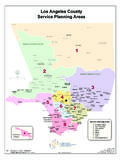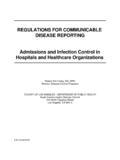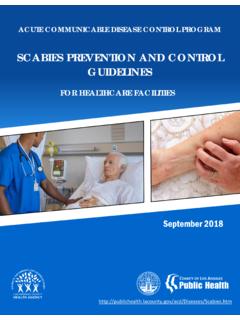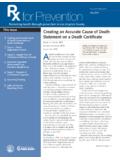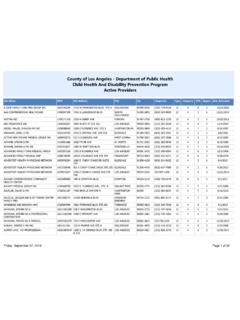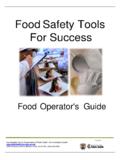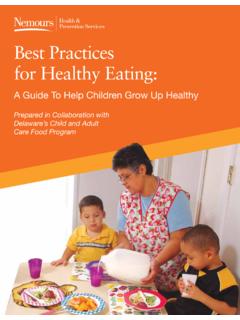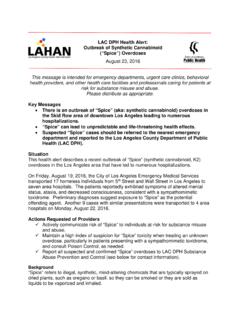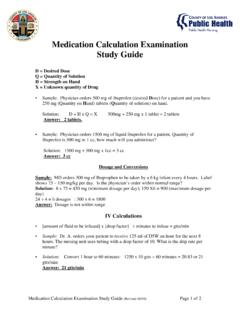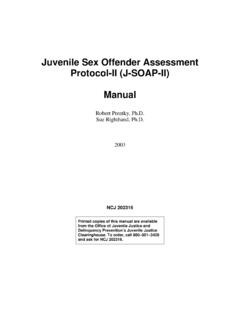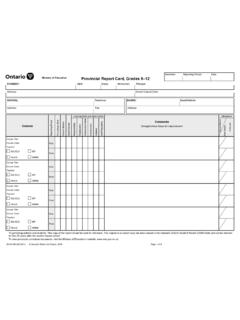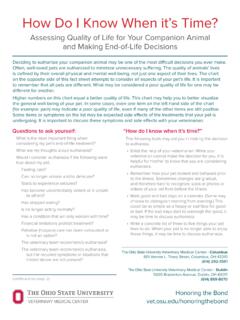Transcription of The ASAM Criteria
1 What s NewinThe ASAM CriteriaTreatment Criteria for Addictive, Substance-Related, and Co-Occurring ConditionsDavid Mee-Lee, MDChief Editor of The ASAM CriteriaBoard-certified psychiatristABAM certifiedSr. Vice President of The Change Companies At A GlAnce: the Six DimenSionS of multiDimenSionAl ASS eSS mentASAM s Criteria uses six dimensions to create a holistic, biopsychosocial assessment of an individual to be used for service planning and treatment across all services and levels of care. The six dimensions are:DimenSion 1 Acute Intoxication and/or Withdrawal PotentialExploring an individual s past and current experiences of substance use and withdrawalDimenSion 2 Biomedical Conditions and ComplicationsExploring an individual s health history and current physical conditionDimenSion 3 Emotional, Behavioral, or Cognitive Conditions and ComplicationsExploring an individual s thoughts, emotions, and mental health issuesDimenSion 4 Readiness to ChangeExploring an individual s readiness and interest in changingDimenSion 5 Relapse, Continued Use, or Continued Problem PotentialExploring an individual s unique relationship with relapse or continued use or problemsDimenSion 6 Recovery/Living EnvironmentExploring an individual s recovery or living situation, and the surrounding people, places, and things123456 The ASAM Criteria structures multidimensional assessment around these six dimensions to provide a common language of holistic.
2 Biopsychosocial assessment and treatment across addiction treatment , physical health, and mental health services, which addresses as well the spiritual issues relevant in six assessment dimensions, briefly described here, are essentially the same as in earlier editions of ASAM s Criteria , with slight modifications to apply to co-occurring mental health conditions that were initially described in PPC-2R (2001)The Six Dimensions of Multidimensional assessment -2-How to Use The ASAM Criteria888-889-8866 | to Use The ASAM Criteria -4-Beginning with the first edition of ASAM s Criteria , certain foundational concepts have continued through this edition and will no doubt serve as the foundation for any future developments. Similar to its prede-cessors, the following guiding principles serve as the basis for all content within The ASAM Criteria : moving from one-dimensional to multidimensional assessment moving from program-driven to clinically driven and outcomes-driven treatment moving from fixed length of service to variable length of service moving from a limited number of discrete levels of care to a broad and flexible continuum of care Identifying adolescent-specific needs Clarifying the goals of treatment moving away from using previous treatment failure as an admission prerequisite moving toward an interdisciplinary.
3 Team approach to care Clarifying the role of the physician Focusing on treatment outcomes Engaging with Informed Consent Clarifying Medical Necessity Incorporating ASAM s definition of addictionBrAnD new chApterS in The ASAM CriTeriAApplication to Adult Special populations Older Adults Parents or Prospective Parents Receiving Addiction treatment Concurrently with Their Children Persons in Safety-Sensitive Occupations Persons in Criminal Justice Settingsemerging understandings of Addiction Gambling Disorder Tobacco Use Disordernew terminoloGyin The ASAM Criteria The individuals served in treatment are now most often referred to as individual, person, participant, or patient, and these are used interchangeably in this publication Book title and concept is now The ASAM Criteria Terms such as dual diagnosis and dual disorders are now described in the spectrum of co-occurring disorders or conditions Detoxification services are referred to in this edition as withdrawal management opioid maintenance therapy (omt) is now discussed as Opioid treatment Programs (OTP) and Office-Based Opioid treatment (OBOT) within opioid treatment Services (otS) level : clinically managed medium-intensity residential treatment is now level.
4 Clinically managed population-Specific high-intensity residential Services Guiding Principles of The ASAM Criteria What s New in The ASAM Criteria then and now1 Compatible with The ASAM Criteria Software Combining adult and adolescent treatment information Incorporation of the latest understanding of Co-occurring Disorders Capability Inclusion of the conceptual framework of ASAM s definition of Addiction and Recovery Oriented Systems of Care Further expansion on the role of the physician Updated Diagnostic Admission Criteria for the levels of care New chapters on gambling and tobacco use disorder An updated opioid treatment section Updates to better assess, understand and provide services for all six ASAM Criteria dimensions Revised terminology Reformatted levels of care numbers A user-friendly format888-889-8866 | Co-Occurring Conditions and Co-Occurring Disorders refer to individuals. Co-Occurring Capable and Co-Occurring Enhanced refer to types of TreatmentAddicti onissuesMentalHealthissuesCo-OccurringCo nditionCo-OccurringDisorderMental Health TreatmentCo-Occurring Capable TreatmentCo-Occurring Enhanced TreatmentIt is increasingly recognized that comorbidity among adolescents with substance use disorders is the rule and not the exception.
5 As in adults, the line between addiction treatment and mental health treatment is increasingly blurring, and the need for co-occurring enhanced, or combined behavioral health program-ming, is great. Although our evidence base for co-occurring treatment is limited compared to that for adults, it is growing. For example, there is mounting evidence that identifying and treating depression in substance-involved youth improves substance use outcomes, and vice versa. Another example is our grow-ing awareness of the psychiatric sequelae of marijuana use in youth, and our growing clinical suspicions that these problems are much worse with synthetic cannabinoids ( K2, spice, etc.). As more knowledge emerges, future editions of the Criteria should incorporate it to support clinical decision Considerations: Co-Occurring DisordersrelevAnt AreAS of inteGrAtionIntegration of substance use services into primary health careIntegration of primary health into addiction treatment settingsIntegration of addiction and mental health services in a variety of settingsaaaMhCo-Occurring DisordersAdolescent-Specific Criteria1applicationsA major advance during the past decade has been the growth of capacity or capability to address mental health, sub-stance use disorder, and general health issues in integrated settings.
6 This approach facilitates participant engagement and improves outcomes while using resources more efficiently. Consequently, just as addiction programs have improved co-occurring capability (and thereby improved their ability to integrate attention to co-occurring issues within addiction settings), the same thing has been happening in other areas of the health care system as vel of withDrAwAl mAnAGement for ADultSlevelDeScriptionAmbulatory Withdrawal Management without Extended On-Site Monitoring1-wmMild withdrawal with daily or less than daily outpatient supervision; likely to complete withdrawal management and to continue treatment or recoveryAmbulatory Withdrawal Management with Extended On-Site Monitoring2-wmModerate withdrawal with all day withdrawal management support and supervision; at night, has supportive fam-ily or living situation; likely to complete withdrawal managementClinically Managed Residential Withdrawal withdrawal, but needs 24-hour support to complete withdrawal management and increase likelihood of continuing treatment or recoveryMedically Monitored Inpatient Withdrawal withdrawal and needs 24-hour nursing care and physician visits as nec-essary.
7 Unlikely to complete withdrawal management without medical, nursing monitoring Medically Managed Intensive Inpatient Withdrawal Management4-wmSevere, unstable withdrawal and needs 24-hour nursing care and daily physician visits to modify withdrawal management regimen and manage medical instabilityNOTE: There are no unbundled withdrawal management services for of cAreADoleScent titleADult InterventionEarly InterventionAssessment and education for at-risk individuals who do not meet diagnostic Criteria for substance use disorder1 Outpatient ServicesOutpatient ServicesLess than 9 hours of service/week (adults); less than 6 hours/week (adolescents) for recovery or motivational enhancement therapies/strategies2 .1 Intensive OutpatientIntensive Outpatient9 or more hours of service/week (adults); 6 or more hours/week (adolescents) to treat multidimensional HospitalizationPartial Hospitalization20 or more hours of service/week for multidimensional instability not requiring 24-hour care3.
8 1 Clinically Managed Low-Intensity ResidentialClinically Managed Low-Intensity Residential24-hour structure with available trained personnel; at least 5 hours of clinical *This Level of Care not designated for adolescent populationsClinically Managed Population-Specific High-Intensity Residential24-hour care with trained counselors to stabilize multidimensional imminent danger. Less intense milieu and group treatment for those with cognitive or other impairments unable to use full active milieu or therapeutic Managed Medium-Intensity ResidentialClinically Managed High-Intensity Residential24-hour care with trained counselors to stabilize multidimensional imminent danger and prepare for outpatient treatment . Able to tolerate and use full active milieu or therapeutic Monitored High Intensity InpatientMedically Monitored Intensive Inpatient24-hour nursing care with physician availability for significant problems in Dimen-sions 1, 2 or 3.
9 Sixteen hour/day counselor ability4 Medically Managed Intensive Inpatient Medically Managed Intensive Inpatient24-hour nursing care and daily physician care for severe, unstable problems in Dimensions 1, 2 or 3. Counseling available to engage patient in treatmentotp (level 1)*OTPs not specified here for adolescent populations, though information may be found in discussion of adult servicesOpioid treatment Program (Level 1)Daily or several times weekly opioid agonist medication and counseling available to maintain multidimensional stability for those with severe opioid use disorderLevels of Caresix di Mensions2toBAcco cASe StuDie ScASe 6TH is a 50-year-old addiction counselor who works at a residential addiction treatment center. The center has decided that they are going to begin treating tobacco addiction along with all other addiction. The staff is not going to be able to smoke at all at work, and will not be allowed to come to work smelling of tobacco smoke.
10 TH is in recovery from addiction to alcohol and pain medications. He has been sober for 23 years and always felt that tobacco was not part of his disease. He feels that he has extra rapport with patients since he goes out smoking with them on breaks. TH has often advised patients who wanted to stop smoking that they should wait at least a year before they even consider stopping, because it is too hard to quit more than one thing at a time. TH has been told by his doctor that his frequent bouts of bronchitis are directly related to his smoking, and that he needs to stop before he does permanent damage to his lungs. TH is about 40 lbs. overweight and fears that if he stops smoking, he will gain even more weight. He has never tried to quit, and is angry about his workplace forcing him to is in the precontemplation stage of change. He needs education about nicotine addiction and motivation for tobacco cessation. If TH will accept treatment , he may benefit from combination pharmacotherapy, taking into account his concern about weight gain.
